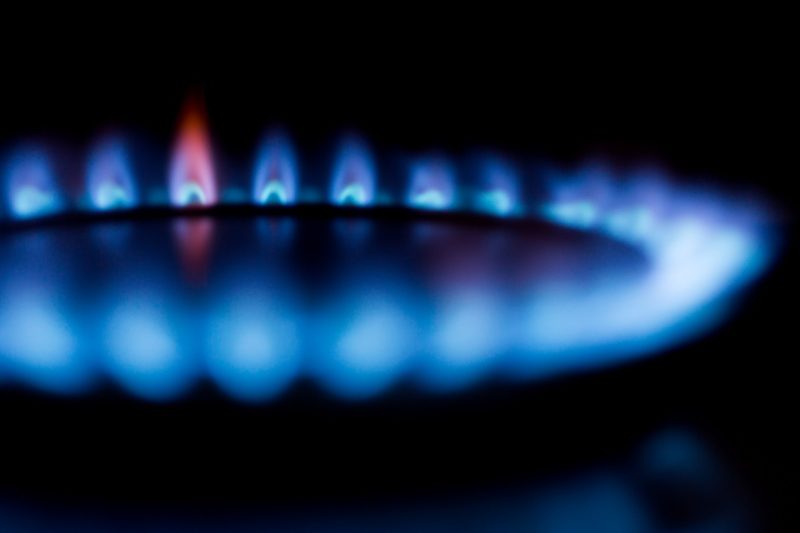Pellet stoves are so convenient to use, but how does a pellet stove work? Its inner workings follow the same principles as any other automated stoves with pellets as its fuel. In this post, we will be covering how do its parts work.
Any automated stove will function just by pressing its button. We will be looking at what happens inside it once you press the buttons. The steps that we will be providing below will be giving you an idea of how does pellet stove works as these steps encompass the cycle of a pellet stove. Without further ado, let’s start!

How Does Pellet Stove Works
So, how does a pellet stove work? Here are the following:
#1. Fuel container
One of the simplest to comprehend is its hopper. This is a box made of metal that serving as a container of pellets. To fuel your pellet stove, open its hopper and pour one bag of pellets into it. In essence, the hopper functions life fuel tank of a car. Feeding the hopper with more pellets will allow you to use your stove longer.
Hopper can be found on the top or at the bottom. Generally, top hoppers are preferred by HVAC specialists since they have a lesser likelihood of catching fire. However, homeowners might want a bottom hopper since it is easier to refill this, given that it is less heavy and close to the floor.
#2. Fuel injector
Auger is the one that makes it easier to decrease or increase heat production of the pellet stove. This component is a screw that is made of cast iron. It pushes pellets from the hopper so that it will burn the pot. In addition, each modern model is designed with a sensor. This is the one that measured the number of pellets needed to maintain or achieve your set on your thermostat.
If the sensor has detected that the pellets are lacking, it will send a signal to the auger that will turn to deliver the right pellet amount to the combustion chamber. If your stove has its hopper on top, you will hear the pellets delivered through the auger that falls onto the tray. But if the hopper is on the bottom, pellets are left by the auger onto the tray.
#3. Combustion chamber
One important part of pellet stoves is their burn pot. This is where pellets are burned. The burning of the pellets is a process that creates heat produced by the pellet stove. For this burning process, the stove requires two things, including oxygen and fuel. Ignition is the primary part.
All modern models of pellet stoves are designed with electrical ignition. You needed to press some button from the thermostat to allow the electric current to create a spark that will be igniting the pellets onto the burn pot. The pellets are compact wood pieces. If burned, they can provide massive energy amounts.
#4. Emission levels
The entire pellet is utilized as fuel. But burning pellets will produce some ash. Therefore, each pellet stove is designed with an ashtray located under its burn pot to gather all these ashes. An advantage of using a pellet stove is its minimal ash produced during the burning process. However, most often than not, you have to clear its ashtray twice or once a week in heat season.
#5. Blower fan
After the pellets have been burned and the energy is produced, it is not the time to transfer it to warm up the house. For this, the blower fan comes significant. The convection blower will provide indoor air and pass it onto the stove’s burn pot to heat it. Now, it will produce the warm air we need, but cleaner. That heated air has moved across different iron bars called a heat exchanger, which is particularly designed to warm air and then transfer to the room through the blower fan.
The unclean air resulted from the air exchange will be expelled outwards. This is usually done through the piping installed at the back of the pellet stove. Dirty air will be blown by the exhaust blower toward this piping.
Perhaps, you own an insert stove; then the piping will most likely continue toward your chimney. Meaning to say, the gas is expelled outside through your chimney. In contrast, free-standing stoves are designed with an exhaust pipe typically installed through the walls, which means that a chimney is unnecessary.
#6. Remote controller
You don’t necessarily need to know how pellet stoves work to utilize it since all of its processes are modulated using the thermostat. Advanced thermostats even include additional functions like controlling the speed of the auger or the airflow of the entire pellet stove directly. But, if I were you, you read how does pellet stove works.
But the majority of thermostats only include one main function, which is to control indoor temperature. So all you have to do is to set your desired temperature using the thermostat, and you will be good. Anyway, to understand further, read here why you should use a pellet stove.
It’s A Wrap!
Even though you don’t need to know how does a pellet stove works, it is still good to know about this. Provided how the six main parts of a pellet stove work, you can have an insight into what it does beyond the button you pressed in your thermostat. Do you want to read more articles about appliances? For example, read how to fix a mini-fridge and how to use a portable air conditioner. Thanks for stopping by! Enjoy reading.
